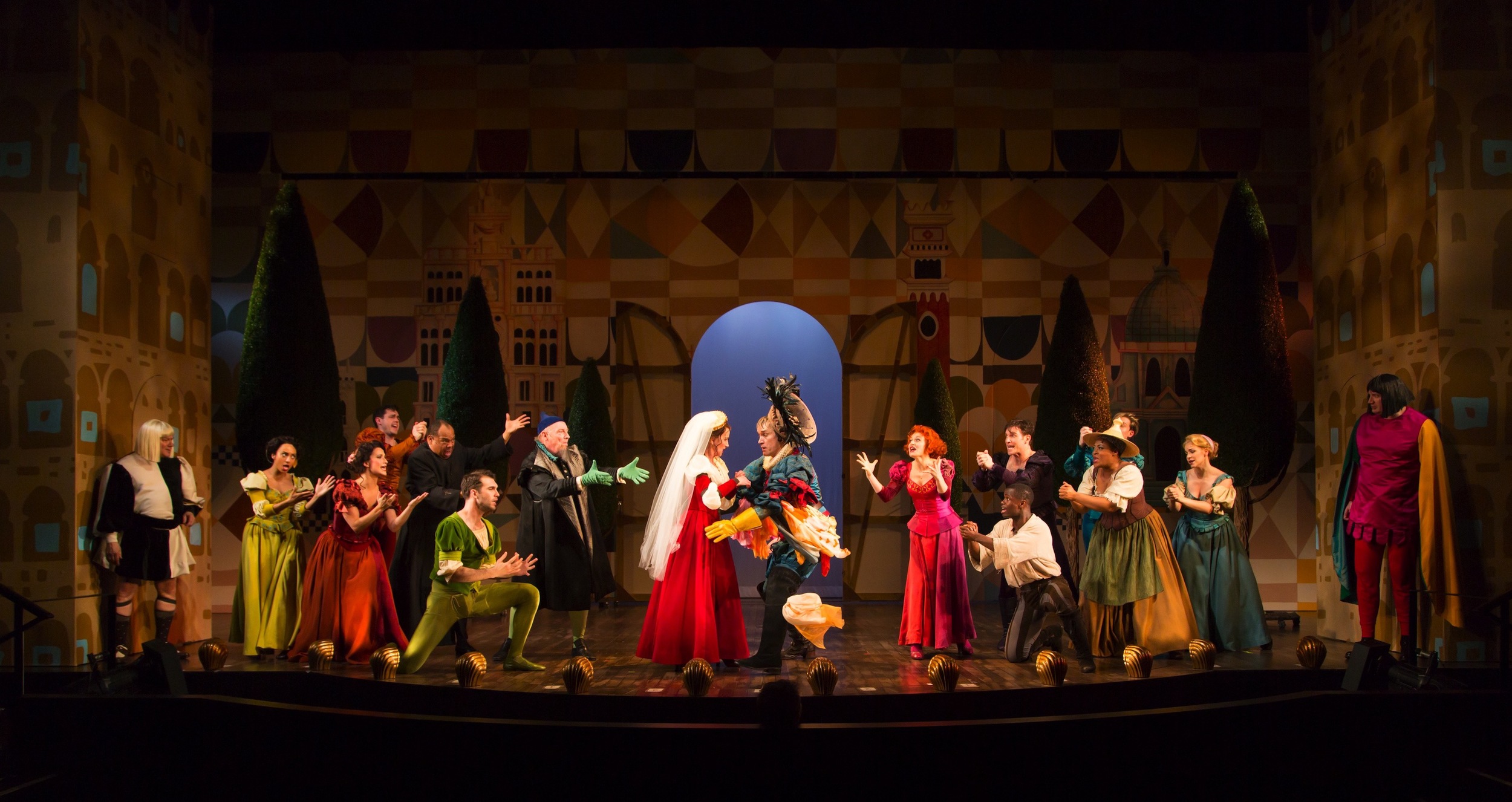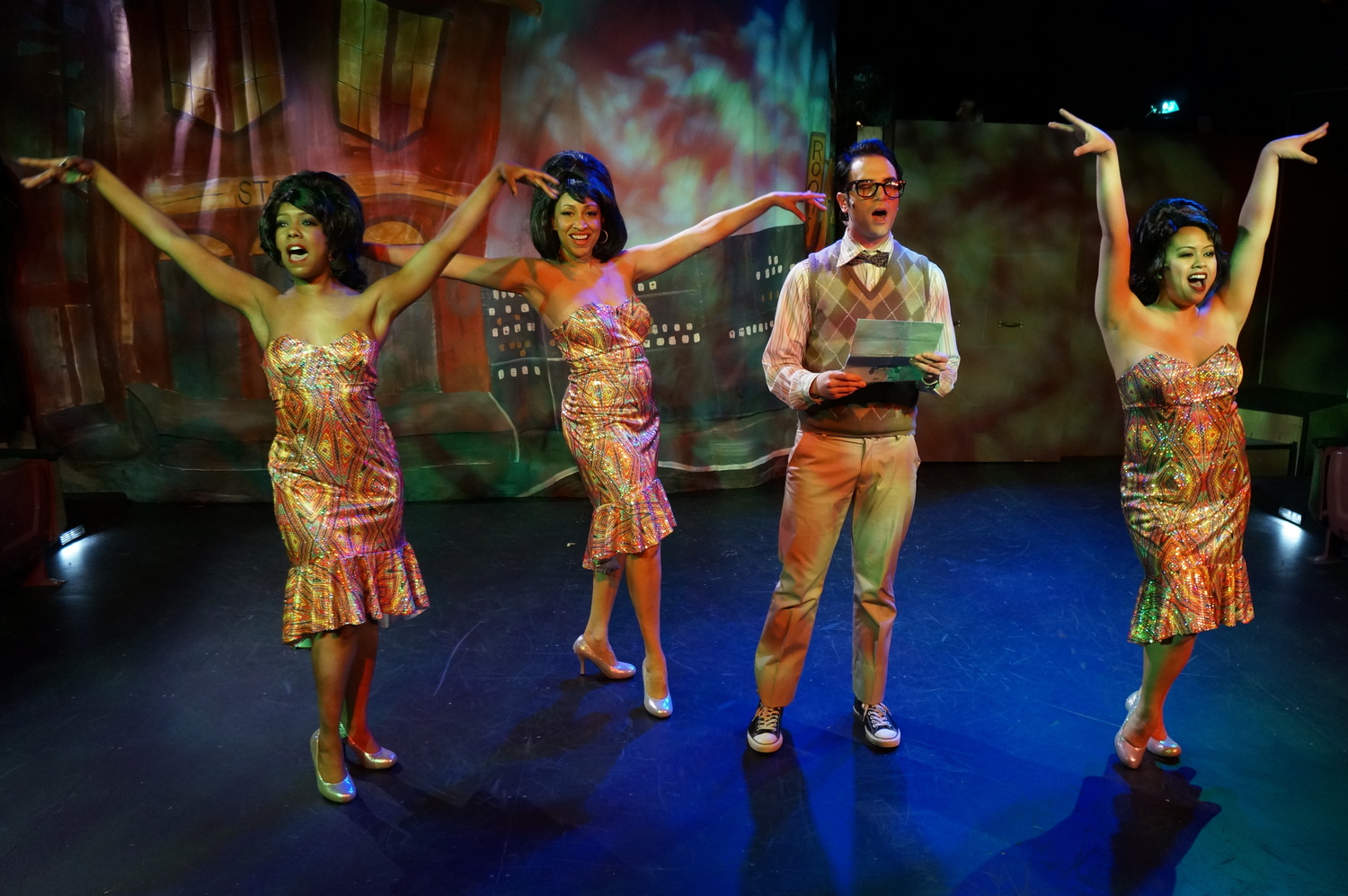Review of Cry You One at the International Festival of Arts and Ideas, 2015
Cry You One, an outdoors theatrical experience at Arts & Ideas, provided by a collaboration of Mondo Bizarro and Artspot Productions, runs for three hours and, by its end, one has been somewhere. As “a play” it is episodic and participatory, and as “a tour” it aims to be transformational, and for those open to theater as event more than spectacle it could well be.
Divided into groups by stickers adorned with an image—Boar, Coyote, Gator, Snake, Spider—the audience members become identified with a creature to be found in the Louisiana bayou country where the show originated. Indeed, Cry You One’s urgency comes in reaction to the encroaching sea that has—as was said in a telling image—nibbled away the toes and much of the sole of the “boot” that is Louisiana. This bodes not well for those who live there, and much of the early going—with staged annoyances among the troupe about who gets to hog the telling for our benefit—is about the ravages to the unique land and culture of Louisiana. The ensemble is a mix of natives and non-natives of the area and their staged group dynamic illustrates how, even among those who want to help Louisiana, there are different agendas and allegiances. Eventually, each group follows its leader, which means attending a presentation specific to each group and (I assume, based on the one I joined) confidences and oneupmanship concerning the other guides.
Transplanted to Maltby Lakes in West Haven, the show does not feel out of place, though I can only imagine how much more moving it is in its natural habitat. To help keep the Cajun flavor, the show boasts much use of music derived from bayou country by music director Sean Larocca, and features Zohar Israel as a Griot poet and musician who speaks for people who have already been driven off the land. One affecting moment comes on the banks of a lake where Zohar tells how there’s a day reserved for the ritual of swimming a lake in Louisiana where the homes of ancestors lie at the bottom—except now, after hurricanes this century, the young are swimming over their own homes.
The communal parts of the production involve dances, singalongs, trooping together through the picturesque landscape of the Lakes, and visiting spaces turned into encircled stages or devised museums—the artifacts and artworks collected in the latter have the rough beauty of the salvaged detritus of lost homes and lives. For all its beauty and camaraderie, there is a certain gloom that hangs over the show—the gloom of time and tide. The walk to the museum space is accompanied by an eerie song that says “the waves come in, the waves go out, sinking, sinking.” The people of the bayou country have long been acquainted with the blues, and no wonder.
The dramatic tension at the heart of the show’s themes is between what is “natural” and what is determined by humankind. So while there is fear and loathing for the depredations of gas companies, and hand-wringing over what has become of the Mississippi for the benefit of business, and gestures toward the kind of projects needed to re-sediment its banks, there are also nagging issues of how some solutions create new problems. There is also a strong sense of how ephemeral human intervention is. Those in it for greed take their money and run, those in it for the sake of the land try to stay in places become uninhabitable. Through it all, Cry You One is crying for those displaced, for those who loved the place and want to preserve its traditions. But it also implies how mysterious and difficult is “man’s place” anywhere on this globe, and how important it is to respect the environment we identify with.
Since any individual experience of the play depends largely on what group you get selected for, I can only speak about the segments of the show from the perspective of “a spider.” Our leader, “Dr. Dr.” Carol Karl (Hannah Pepper-Cunningham), is an overly self-conscious scientist who proffered her diplomas for our edification and became upset that her comrades had added a piece of “hate mail” from a former coworker; the innocuous-seeming card served to remind her of a disgrace she endured due to alleged lack of empathy for the people who live where a needed waste station was set to be built. Much later, this theme gets worked out in an alarming and almost schizophrenic fashion to let us know that poor Dr. Karl is bedeviled by charges of racism and a haunting experience of having to flee her own home as a child. Dr. Karl is an oddly likeable, forlorn character, her spider persona a chilling creation, and the space set up for their struggle one of the most memorable in the show I saw.
The talents behind Cry You One—including director Kathy Randels, writers Raymond “Moose”Jackson and Joanna Russo—clearly have a shrewd sense of group dynamics as well as a varied grasp of theatrical presentation. Three hours may seem long, but it’s key to the feeling of having stepped away from one’s own life to become “settled” in another environment with other people. The experience is apt to set off all kinds of associations, from tours of historical sites to enactments at amusement parks to classroom protocols on class trips to awkward gatherings of strangers to pay tribute to some common cause. What it feels nothing like is the passive viewing of a play in a theater.
Interaction is key to one’s experience, while observation, for a critic, is key to commentary. Cry You One offers much opportunity for both. Conceived as “a grand procession for the land that is disappearing, “ by its originator Nick Slie, Cry You One asks you to think about what you’d take if you had to leave where you live. When it was over, I walked out alone, thinking about where I’d been, and feeling like I’d left some friends behind.
International Festival of Arts and Ideas presents
Cry You One
Mondo Bizarro & Artspot Productions
Directed by Kathy Randels
Ensemble: Jon Greene; Zohar Israel; Hannah Pepper-Cunningham; Rebecca Mwase; Lisa Moraschi Shattuck; Nick Slie
Additional performers: Kathy Randels and Sean Larocca; Designers: Jeff Becker and Melisa Cardona; Writers: Raymond “Moose” Jackson and Joanna Russo; Music Director: Sean Larocca; Choreographer: Millicent Johnnie; Costume Design: Bear Hebert and Laura Sirkin-Brown; Banner Photographs: Monique Verdin; Stage Manager: Nick Moser; Associate Producer: Tracy Boyles; Line Producer: Bear Hebert; Set Construction: Zachary Grace; Scenic Painting: Alexandria Bozeman
June 13, 14, 16, 20, 21 at 2 pm; June 17, 18, 19 at 4 pm
Maltby Lakes, West Haven


























































